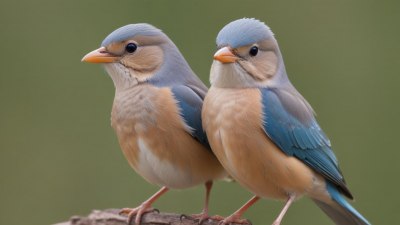Why Birds Seem So Smug When It’s Nice Out
Explore the reasons behind birds' seemingly smug behavior in pleasant weather and what it means for their survival.

This image was created with the assistance of Freepik
Have you ever noticed how birds seem particularly smug on a sunny day? Their vibrant colors and cheerful songs radiate an aura of contentment that almost mirrors the delight humans feel during a beautiful afternoon. This phenomenon has sparked curiosity about why birds exhibit such behavior and what it signifies. In this article, we’ll delve into the differences between birds and other animals when it comes to displaying happiness, explore their behavioral patterns, and analyze the ecological significance of such smugness.
The Biology of Birds
Birds are often associated with sunny skies and open spaces; their lightweight bodies and powerful wings allow them to soar above us, surveying their surroundings. To understand why they appear so smug in nice weather, we need to consider their biology. Birds have a highly efficient respiratory system that enables them to thrive in various conditions. Their feathers offer insulation and protection from environmental extremes, making them adaptable creatures. This adaptability becomes advantageous during favorable weather, where food abundance and lower predation risks create a conducive environment for carefree living.
Bird Behavior and Its Influences
Birds are also highly social animals, often living in flocks or colonies. During nice weather, their social interactions become more pronounced, showcasing a variety of behaviors that could be interpreted as smugness. For instance, they are more likely to engage in singing, displaying to potential mates, and performing aerial acrobatics. These behaviors not only strengthen social bonds but also communicate health and vitality, thereby enhancing their prospects for mating and survival.
Furthermore, the availability of food during sunny periods influences how birds behave. Insects are more active, flowers bloom, and trees bear fruits, providing birds with easier access to nourishment. This abundance allows birds to feast and exhibit energy in a way that can be perceived as being smug. When you see a bird perched on a fence, singing its heart out under the sun, it’s likely enjoying a bountiful feast nearby.
Email Rewards of Summer
As spring melds into summer, breeding becomes a focal point for many bird species. The increased light and warmth signal birds to reproduce, leading to the assertion of territory and the establishment of nesting sites. Smug behavior during this period can be attributed to the success of these endeavors. A well-fed, well-mated bird singing on a branch is a clear indicator of a successful life moment. The challenges of colder months have been overcome, and the birds can now enjoy the fruits of their labor.
Singing and Displaying
Birdsong is perhaps the most visible manifestation of how birds express their joy. Different species have developed distinct songs that are not only beautiful but play a crucial role in their social behaviors. A melodious tune often serves multiple purposes: attracting mates, repelling rivals, and even coordinating activities among flock members. The jubilant songs of birds can be seen as a brewing sense of pride that comes alive in pleasant weather. As nature’s orchestra begins, it’s easy to interpret their vocalizations as a celebration of the day's beauty.
Contrasts with Other Animals
Birds aren’t the only animals that revel in sunny weather; however, their expressions of joy seem more pronounced. For example, many mammals retreat to shaded areas during intense heat or are less visibly active. In contrast, birds take advantage of the warm sun to stretch their wings, build nests, and perform social displays. The contrast in behaviors stems from evolutionary adaptations; birds are often more visually expressive and audibly vocal than their mammalian counterparts. This observable smugness can be charmingly anthropomorphized as a way to highlight their glee.
The Role of Ecological Factors
Weather is just one of the many factors influencing bird behavior. Local ecosystems dictate the availability of resources and influence migratory patterns as well. During favorable weather, birds can maintain a stationary lifestyle, thriving on local resources, rather than expending energy on long-distance travels. Areas rich in biodiversity lead to a bloom of colorful birds during sunny spells. Birdwatchers often seek these favorable moments, where avian smugness can be captured both in memory and through photography, enriching the experience of birding enthusiasts.
Human Effects on Bird Behavior
Human activity can dramatically impact bird behavior and their perceived smugness. Urbanization has modified many natural habitats, presenting a mixed bag for avians. While some species adapt remarkably well to urban settings, exhibiting increased boldness, others retreat into quieter, more natural environments. Those that thrive in urban spaces often exhibit a carefree attitude, as they adapt to inconsistent food sources and ecological pressures. This adaptability can manifest as a smug behavior, showcased in their confident social interactions.
The Whimsical Charm of Birds
Ultimately, while it's enchanting to think of birds as content and smug while basking in the sun, it is essential to recognize the complexities underlying their behaviors. Birds display smugness not merely as a personal indulgence but as part of an evolutionary process that has allowed them to flourish in diverse environments. Their joy is an integral part of their existence, contributing to the ecological tapestry that surrounds us. So next time you see a bird seemingly reveling in pleasant weather, remember that their smug demeanor is filled with life lessons on adaptation, survival, and the small joys that nature offers.











